Today Fitbit launched their least expensive smartwatch to date – the Fitbit Versa Lite. This newish watch essentially takes the existing Fitbit Versa smartwatch and removes the music playback, along with a handful of smaller features like stair counting (and two of the three buttons). In doing so they’ve dropped the price from $199 down to $159. The company also launched the Inspire & Inspire HR activity trackers ($69/$99) to replace a slew of existing trackers including the Fitbit Zip, Alta, and Alta HR. And finally, they announced their 2nd generation kids activity tracker – the ACE2. I’ve got a separate post coming up very shortly on those. Hang tight!
But this post is all about the Fitbit Versa Lite, so we’ll stick to the details on that, and there’s no better way to do that then diving into how exactly it differs from its older and more capable sibling, the Versa. And, perhaps no better way than a simple video detailing it all:

Oh – and before we go too far, note that this is not a review. This is just a dive into all the details of things. For a full in-depth review, check back…in a while. Once I’ve had time to figure out the full good/bad/ugly after some weeks or so.
What’s different:
The Versa Lite (above in blue) retains the vast majority of the features of the full Versa (above in black), including the touch screen and the ability to install/download 3rd party apps on it. It also retains core features like activity tracking, the optical heart rate sensor, female health tracking, sleep tracking, smartphone notifications, and even Fitbit’s ‘connected GPS’ capabilities.
Still, there are a handful of features that were removed from the full Versa to cut the price down on the Versa Lite. They are as follows:
– Stairs/Floor Tracking removed (the barometric altimeter was removed)
– Swim Lap Counting removed (it’s still waterproof though)
– Music storage/streaming capabilities removed (but it can still control music on your phone)
– WiFi removed (given it was used primarily for music transfer)
– On-screen structured workouts removed
– Fitbit Pay not available (it was only on the even more expensive Fitbit Versa Special Edition)
– Two buttons removed (because one-button is the cool kids club)
And that’s it in a nutshell.
To recap, all of the following features are still there. In fact, Fitbit has a fancy little slide deck that shows this outlined with plenty of dots to keep everyone clear on all the nuances.
In talking with Fitbit, there’s a few other minor technical things that are notable:
– The removal of the buttons may impact some apps that might have assumed the buttons would be there. Remember that up until now, the FitbitOS (loosely built atop the Pebble OS learnings), only supported the Fitbit Versa and Fitbit Ionic. With the Versa being a slimmed down Ionic, it retained the three physical button layout (plus the touch screen). With that gone, I suspect we might see a few bumps in the road on apps. Though frankly, despite having some 500+ apps in the Fitbit store, many of them are kinda shruggable.
– The optical HR sensor remains exactly the same as before. This means you’ll get the same performance as you saw with the Fitbit Versa (it was OK), but more importantly you’ll get their SPO2 readings. Whereas the lower end Fitbit Inspire/Inspire HR doesn’t get the SPO2 readings.
– Like the Versa there’s no built-in GPS, it still leverages your phone. The only product in Fitbit’s current lineup that has onboard GPS is the Fitbit Ionic (prior to that there was the Fitbit Surge). Note that for running/walking activities you don’t need your phone to get distance/pace though, it’ll do that using the accelerometer. However, if you want a GPS track (such as to upload to Strava), then you’ll need your phone within Bluetooth range.
And finally, on the straps side of the house – all straps remain completely compatible between all Versa units. So if you find an accessory Fitbit Versa strap from a higher end unit that you like, you can slap it on the Versa Lite as well. Fitbit also introduced a pile of new woven ones and other swankier bands, plus a slate of colored silicon straps.
So now that we’ve covered what’s different – let’s step back a bit and just talk about the basics of the device itself.
Hands-on Overview:
Starting off with the box, the unit comes in a variety of base colors, but more importantly it comes with both a large and small strap. You’ll find the small strap already affixed to the watch, and then the larger strap sitting in the box. It uses the same USB charger as the original Versa did (in all its non-standard oversized ugliness). Three’s also a quick start guide in there as well.
Starting off at the basics, you’ve got your touch screen, which is an always-off display unless you raise your wrist or tap it. You can however set it to be always-on during workout modes, though it will impact battery. On the left side you’ll find a single button, which acts like a ‘back’ button.
You can swipe from the right to access apps, including the exercise app, breathing app, and timer/alarm apps. This is also where you’ll find settings too:
Meanwhile, if you swipe up from the bottom you’ll get a look at today’s stats, including metrics like steps, distance, and calories.
You’ll also get your current heart rate and resting heart rate, as well as sleep metrics.
Meanwhile, if you swipe down from the top you’ll get any smartphone notifications that you’ve configured.
These are configured within the Fitbit smartphone app, and by default allow texts/calls/calendar notifications. But for other apps you’ll need to enable them using a separate settings page.
Speaking of the smartphone app, this is where you’ll download apps and configure the watch faces:
While there are a number of apps, they generally still seem fairly limited compared to the Apple Watch. Take for example the Nest app, it just controls the thermostat, whereas the Nest app on the Apple Watch also shows you your Nest Cam’s at a quick glance, including a simple shot when motion is detected. Meanwhile, the NYT app only shows a couple lines of the article, barely more than a typical smartphone notification would show.
For workout shortcuts, you can add those within the app as well, though only up to a maximum of 7 shortcuts, after which you’ll need to give something the boot to make room for it:
The watch will constantly sync your stats in the background to your phone, though you could turn that off if you want to save a tiny bit of battery (it’s so small it really doesn’t matter). Meanwhile, the dashboard will show your current activity stats for the day, including steps, distance, calories, and active minutes:
You can tap into any of the given categories to get more reports about it, including trending over time. None of this has changed from past Fitbit products, though Fitbit will be shortly rolling out some user interface tweaks to the Fitbit companion app that surfaces forward a bit more of the social elements.
First Run Test:
While not everyone that picks up the Versa Lite will be using it for workouts, there’s a reasonably good chance that at some point you will. So a few hours ago I went out for a quick 5KM run with it. I’d typically go longer, but I just stepped off a transatlantic redeye flight this morning and…well…it’s gonna be a long day. Also, it’s raining cold water sideways again. So yeah.
First up is starting the run. To do so you’ll swipe over to the Exercise option and then select Run (seen above). Note that this is pretty much the same across all of the sports on the Fitbit Versa series. After selecting a sport you can configure options within the run. For example, you can choose which data fields will be shown by default, and which fields will enumerate when you press the button.
You can also change automatic lap settings here. In my case I changed it to automatically lap every mile. Additionally, I validated that ‘Connected GPS’ was on, so that it would use my phone for GPS, thus allowing me to see a track afterwards.
There’s no option to connect to any sensors (be it HR straps or cycling sensors).
At that point you’ll head back to the main run screen and wait for it to connect to your phone and get the GPS signal. Once done, go ahead and tap that play button to start the workout. That said, I’ve never understood why Fitbit shows ‘Let’s Go!’, when it’s clearly not ready to go.
At this point the unit is now recording the workout and you can go about your business, which in my case was running. You can tap the screen, or the button, to iterate through the display fields that you’ve setup.
Additionally, if you’ve configured automatic laps you’ll get lap alerts each time you hit the threshold you’ve setup. And if you’ve setup a specific threshold, you’ll see stats related to that as well. The touchscreen meanwhile seems to work just fine in the rain – I didn’t have any problems with today’s run there.
Once at the conclusion of your run you’ll get summary stats that you can glance at, including the individual lap times and totals like distance, average pace, and calories.
All of this is then transmitted to your smartphone via Bluetooth and then available within the Fitbit app. Additionally, it’ll forward the data on to partners like Strava, if you’ve set those up:
And you can see my run here on Strava as well.
From a HR accuracy standpoint, things actually looked reasonably good this time when I tossed it into the DCR Analyzer. We saw a bit of a fumble in the first 45 seconds on the heart rate, but it recovered super quick and it was good to go for a while. And frankly it’s pretty common to see HR sensors of all types stumble in the first 1-2 minutes.
Then there was one more oddity for a few seconds around the 7:20ish marker, but that’s it. Not sure what happened there. This was compared against a Garmin chest strap and the Apple Watch Series 4 optical HR sensor. I did do a bit of a sprint towards the end, and it tracked well there.
From a GPS standpoint it’s going to use the iPhone’s GPS, and in fact – so would have the Apple Watch since it’ll always use your iPhone when in range. So it’s really only compared against the Garmin Forerunner 935 here. But no matter, all of the units tracked the same. Despite using the iPhone GPS, one should remember that apps can still do good (or bad) things to the GPS tracks, and everything looks pretty clean here.
Again – from a first quick 5KM run standpoint, things seem pretty good.
Product Comparison:
I’ve added the Fitbit Versa Lite into the product comparison database, allowing you to mix and match it against any products I’ve reviewed or had appreciable hands-on time with. You can hit it up and make your own product comparison charts here with ease.
For the purposes of this chart, I’ve compared it against the previous Fitbit Versa. But at that point it gets a bit tricky as to who to compare it against, to be honest. Typically I aim for things in the same price bucket, but in this case – there’s actually not much there yet. Garmin’s lowest priced apps-capable offering is the Vivoactive 3, which sits some $80 higher at $249. The Apple Watch Series Series 3 does also frequently slip down into the $199 price bucket here and there on sale too. But that’s not an everyday price. Then there’s the just-announced Samsung Galaxy Active at $199, but that isn’t available yet either (fear not, I’ve ordered one).
The Samsung Galaxy Active is probably the best comparison point, especially since it does include GPS (and music no less), but I’ll have to wait until my unit comes in to get hands-on time and get it into the database.
Until then, I’ve gone with the below lineup as a starting point, but will update this over time:
| Function/Feature | Fitbit Versa Lite | Apple Watch Series 3 | Fitbit Versa | Garmin Vivoactive 3 |
|---|---|---|---|---|
| Copyright DC Rainmaker - Updated June 21st, 2021 @ 5:19 am New Window | ||||
| Price | $169 | $169-$179 | $149 | $129 |
| Product Announcement Date | March 6th, 2019 | Sept 12th, 2017 | March 2018 | Aug 31st, 2017 |
| Actual Availability/Shipping Date | March 2019 | Sept 22nd, 2017 | April 2018 | September 2017 |
| GPS Recording Functionality | via phone | Yes | via phone | Yes |
| Data Transfer | Bluetooth Smart | Bluetooth Smart | Bluetooth Smart | USB, BLUETOOTH SMART |
| Waterproofing | 50m | 50m | 50m | 50 meters |
| Battery Life (GPS) | N/A | 5hrs GPS on time (24-48hrs standby) | N/A | Up to 13 hours GPS |
| Recording Interval | 1-second | Varies | 1-second | 1s or Smart Recording |
| Alerts | Visual/Vibrate | Vibration/Audio/Visual | Visual/Vibrate | Vibrate/Visual |
| Ability to download custom apps to unit/device | Yes | Yes | Yes | Yes | Music | Fitbit Versa Lite | Apple Watch Series 3 | Fitbit Versa | Garmin Vivoactive 3 |
| Can control phone music | Yes | Yes | Yes | Yes |
| Has offline music storage and playback | No | Yes | Yes | No |
| Streaming Services | N/A | Apple Music, Spotify (but not offline yet) | Pandora, Deezer | Payments | Fitbit Versa Lite | Apple Watch Series 3 | Fitbit Versa | Garmin Vivoactive 3 |
| Contactless-NFC Payments | No | Yes | Yes (with certain editions) | Connectivity | Fitbit Versa Lite | Apple Watch Series 3 | Fitbit Versa | Garmin Vivoactive 3 |
| Bluetooth Smart to Phone Uploading | Yes | Yes | Yes | Yes |
| Phone Notifications to unit (i.e. texts/calls/etc...) | Yes | Yes | Yes | Yes |
| Live Tracking (streaming location to website) | No | With 3rd party apps | No | Yes |
| Group tracking | No | No | No | No |
| Emergency/SOS Message Notification (from watch to contacts) | No | Yes | No | No |
| Built-in cellular chip (no phone required) | No | Yes (with cellular version) | No | No | Cycling | Fitbit Versa Lite | Apple Watch Series 3 | Fitbit Versa | Garmin Vivoactive 3 |
| Designed for cycling | Yes | Yes | Yes | Yes |
| Power Meter Capable | No | No | No | With some Connect IQ apps |
| Speed/Cadence Sensor Capable | No | No | No | Yes |
| Strava segments live on device | No | No | No | No |
| Crash detection | No | No | No | No | Running | Fitbit Versa Lite | Apple Watch Series 3 | Fitbit Versa | Garmin Vivoactive 3 |
| Designed for running | Yes | Yes | Yes | Yes |
| Footpod Capable (For treadmills) | No (but has treadmill functionality) | With 3rd party apps | No (but has treadmill functionality) | Yes |
| Running Dynamics (vertical oscillation, ground contact time, etc...) | No | No | No | No |
| VO2Max Estimation | Yes, via app | Yes | Yes, via app | Yes |
| Race Predictor | No | No | No | No |
| Recovery Advisor | No | No | No | No |
| Run/Walk Mode | No | With 3rd party apps | No | Yes | Swimming | Fitbit Versa Lite | Apple Watch Series 3 | Fitbit Versa | Garmin Vivoactive 3 |
| Designed for swimming | Sorta (waterproof) | Yes | Yes | Yes |
| Openwater swimming mode | No | YEs | No | No |
| Lap/Indoor Distance Tracking | No | Yes | Yes | Yes |
| Record HR underwater | N/A | Yes | No | No |
| Openwater Metrics (Stroke/etc.) | N/A | Basic stroke type only | No | No |
| Indoor Metrics (Stroke/etc.) | N/A | Basic stroke type only | Yes | Yes |
| Indoor Drill Mode | N/A | No | No | No |
| Indoor auto-pause feature | N/A | Yes | No | No |
| Change pool size | N/A | Yes | Yes | Yes |
| Indoor Min/Max Pool Lengths | N/A | 1y/m to 1,500y/m+ | 10m/y-100m/y | 17M/18Y TO 150Y/M |
| Ability to customize data fields | N/A | Very limited | Yes | Yes |
| Captures per length data - indoors | N/A | Yes | Yes | |
| Indoor Alerts | N/A | Yes (goals) | Yes (distance) | Yes | Triathlon | Fitbit Versa Lite | Apple Watch Series 3 | Fitbit Versa | Garmin Vivoactive 3 |
| Designed for triathlon | No | Not really | No | No |
| Multisport mode | No | Yes | No | No | Workouts | Fitbit Versa Lite | Apple Watch Series 3 | Fitbit Versa | Garmin Vivoactive 3 |
| Create/Follow custom workouts | No | With 3rd party apps | No (Premium Coached only) | Yes |
| On-unit interval Feature | No | With 3rd party apps | No | Sorta (2 preloaded ones, but no customization) |
| Training Calendar Functionality | No | With 3rd party apps | No | Yes | Functions | Fitbit Versa Lite | Apple Watch Series 3 | Fitbit Versa | Garmin Vivoactive 3 |
| Auto Start/Stop | Yes | Yes | Yes | Yes |
| Virtual Partner Feature | No | No | No | No |
| Virtual Racer Feature | no | No | no | No |
| Records PR's - Personal Records (diff than history) | No | No | No | Yes |
| Tidal Tables (Tide Information) | No | No | No | No |
| Weather Display (live data) | Yes | Yes | Yes | Yes | Navigate | Fitbit Versa Lite | Apple Watch Series 3 | Fitbit Versa | Garmin Vivoactive 3 |
| Follow GPS Track (Courses/Waypoints) | No | With 3rd party apps | No | No (but some 3rd party apps can) |
| Markers/Waypoint Direction | No | With 3rd party apps | No | Yes (to pre-saved spots) |
| Offline Maps | No | With 3rd party apps | No | No |
| Back to start | No | With 3rd party apps | No | YEs |
| Impromptu Round Trip Route Creation | No | With 3rd party apps | No | No |
| Download courses/routes from phone to unit | No | With 3rd party apps | No | NO | Sensors | Fitbit Versa Lite | Apple Watch Series 3 | Fitbit Versa | Garmin Vivoactive 3 |
| Altimeter Type | None | Barometric | Barometric | Barometric |
| Compass Type | N/A | N/A | N/A | Magnetic |
| Optical Heart Rate Sensor internally | Yes | Yes | Yes | Yes |
| SpO2 (aka Pulse Oximetry) | No | No | ||
| Heart Rate Strap Compatible | No | Yes | No | Yes |
| ANT+ Heart Rate Strap Capable | No | No | No | YEs |
| ANT+ Speed/Cadence Capable | No | no | No | Yes |
| ANT+ Footpod Capable | No | No | No | Yes |
| ANT+ Power Meter Capable | nO | No | nO | No |
| ANT+ Lighting Control | nO | No | nO | Yes |
| ANT+ Bike Radar Integration | No | No | No | No |
| ANT+ Trainer Control (FE-C) | No | No | No | No |
| ANT+ Remote Control | No | No | No | No (Yes for VIRB camera control) |
| ANT+ eBike Compatibility | No | No | No | No |
| ANT+ Gear Shifting (i.e. SRAM ETAP) | No | No | No | No |
| Shimano Di2 Shifting | No | No | No | No |
| Bluetooth Smart HR Strap Capable | No | Yes | No | YEs |
| Bluetooth Smart Speed/Cadence Capable | No | No | No | Yes |
| Bluetooth Smart Footpod Capable | No | No | No | Yes |
| Bluetooth Smart Power Meter Capable | No | No | No | No |
| Temp Recording (internal sensor) | No | No | No | No |
| Temp Recording (external sensor) | no | No | no | Yes | Software | Fitbit Versa Lite | Apple Watch Series 3 | Fitbit Versa | Garmin Vivoactive 3 |
| Desktop Application | PC/Mac | None | PC/Mac | Garmin Express |
| Web Application | YEs | None | YEs | Garmin Connect |
| Phone App | iOS/Android/Windows | iOS only | iOS/Android/Windows | iOS/Android/Windows |
| Ability to Export Settings | No | No | No | No | Purchase | Fitbit Versa Lite | Apple Watch Series 3 | Fitbit Versa | Garmin Vivoactive 3 |
| Amazon | Link | Link | Link | Link | DCRainmaker | Fitbit Versa Lite | Apple Watch Series 3 | Fitbit Versa | Garmin Vivoactive 3 |
| Review Link | Link | Link | Link | Link |
Again – don’t forget you can compare any product you’d like within the product comparison tool here.
Wrap-Up:
Everything we’ve seen here seems to point to a bit of simplification of the Fitbit line, as well as offering more capable units at lower prices than the company has historically. While it’s easy to knock on some of Fitbit’s recent financial growth – the hard reality is they’re still the #2 smartwatch vendor in the US and still selling around 15 million units a year. That’s nothing to sneeze at.
People have been predicting Fitbit’s demise since the first Apple Watch was announced – but in reality all that’s done is increase interest in not just Fitbit’s offerings, but also Garmin, Samsung, and others. Not everyone can have an Apple Watch (be it price, or because it only works with an iOS device), nor does everyone want one. Companies like Fitbit and Garmin are offering battery life that goes upwards of a week (or many weeks in some cases) – which again, is what some folks rightfully want.
As for the Versa Lite, I think it does strike a reasonable balance in feature reduction compared to the full Versa edition. I’m a little bit hesitant on how well the firmware backfill bits will work. Sure, Fitbit has done that in the past for other watches – but that was when the Fitbit operating system was smaller and when there weren’t 3rd party apps to contend with. We’ll have to see over time how well this works out in reality.
Still, for those that want an introduction into the smartwatch realm (with the definition du jour there being a watch that accepts 3rd party apps in some form of a marketplace), this is pretty much the most accessible mainstream option out there. I’ve got no doubt it’ll put pressure on the likes of Garmin especially to find ways to offer a Vivoactive Lite style product.
With that – thanks for reading!
Found this useful? Support the site!
Found This Post Useful? Support The Site!
Hopefully you found this review/post useful. At the end of the day, I’m an athlete just like you looking for the most detail possible on a new purchase – so my review is written from the standpoint of how I used the device. The reviews generally take a lot of hours to put together, so it’s a fair bit of work (and labor of love). As you probably noticed by looking below, I also take time to answer all the questions posted in the comments – and there’s quite a bit of detail in there as well.
If you're shopping for the Fitbit Versa Lite or any other accessory items, please consider using the affiliate links below! As an Amazon Associate I earn from qualifying purchases. It doesn’t cost you anything extra, but your purchases help support this website a lot.
And of course – you can always sign-up to be a DCR Supporter! That gets you an ad-free DCR, access to the DCR Quarantine Corner video series packed with behind the scenes tidbits...and it also makes you awesome. And being awesome is what it’s all about!
Thanks for reading! And as always, feel free to post comments or questions in the comments section below, I’ll be happy to try and answer them as quickly as possible. And lastly, if you felt this review was useful – I always appreciate feedback in the comments below. Thanks!


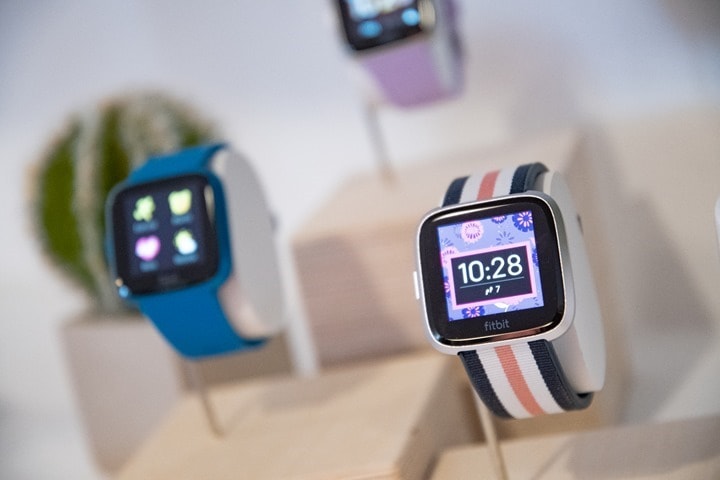
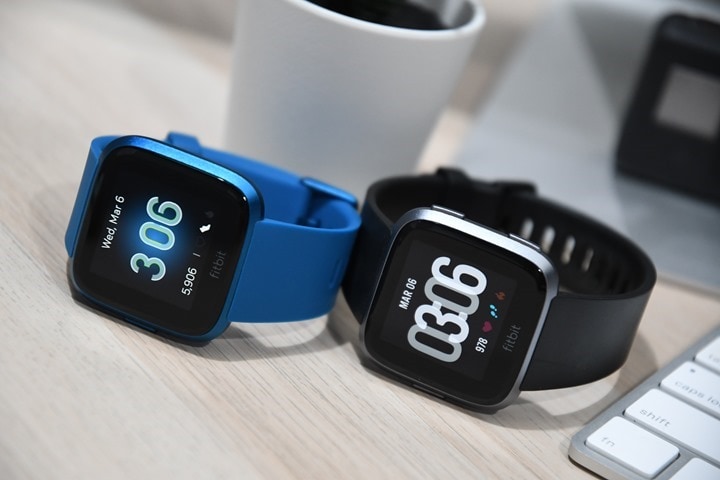

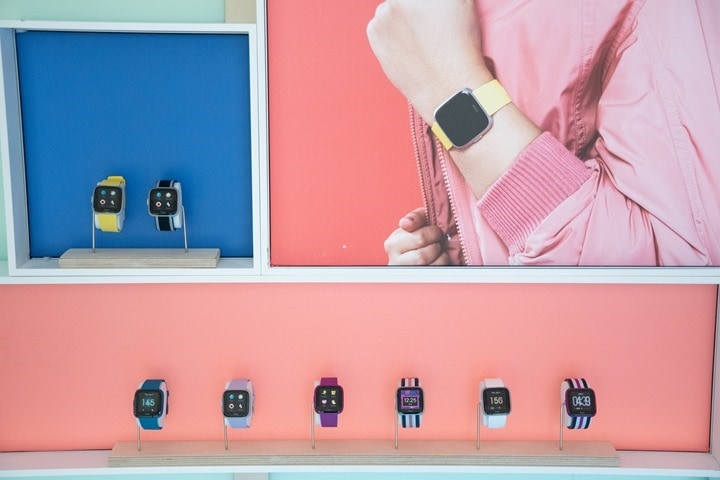
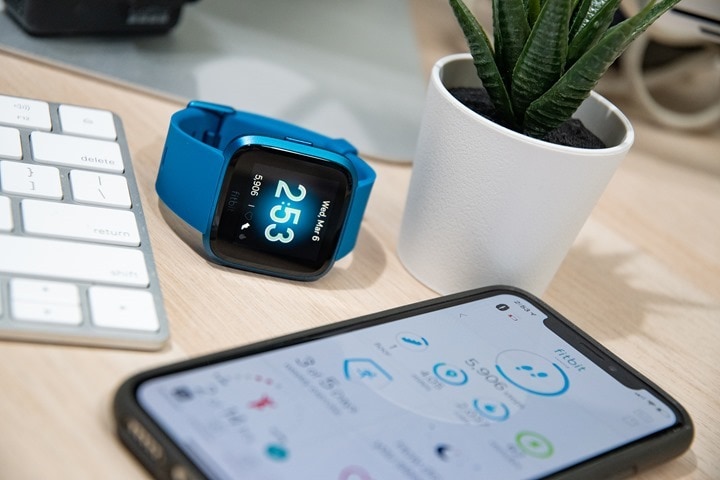
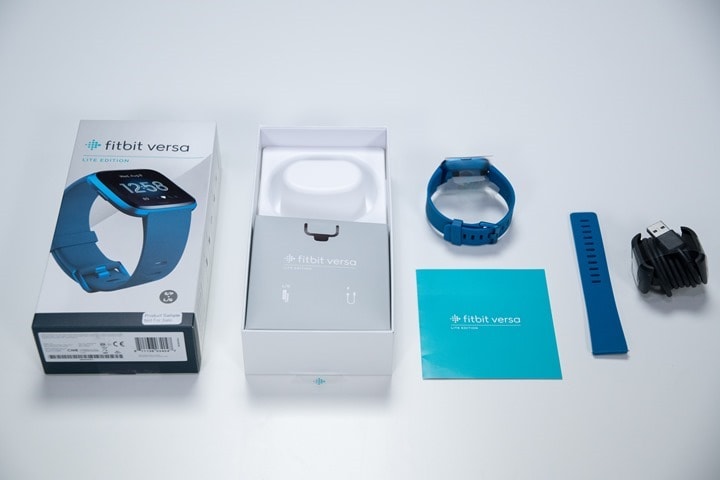
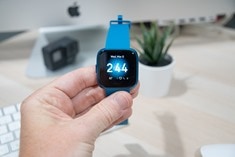

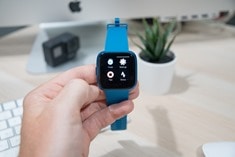
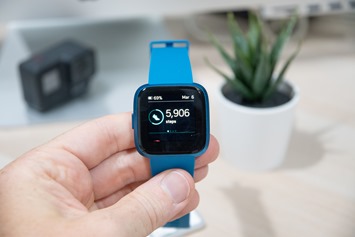
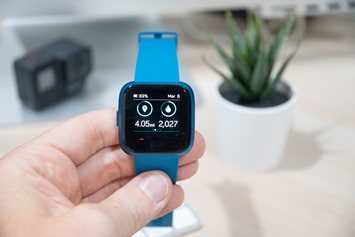
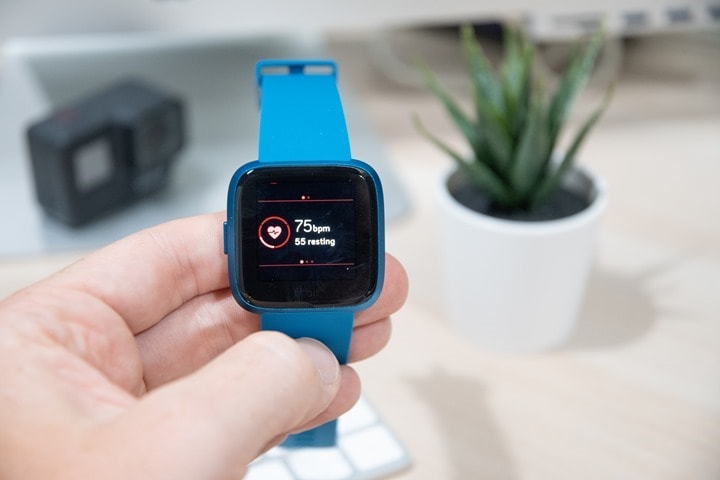

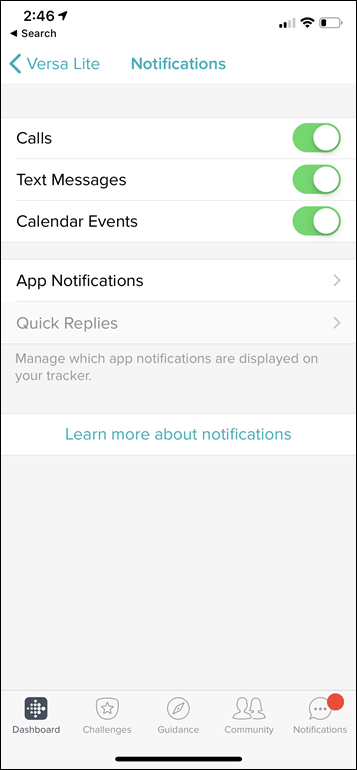
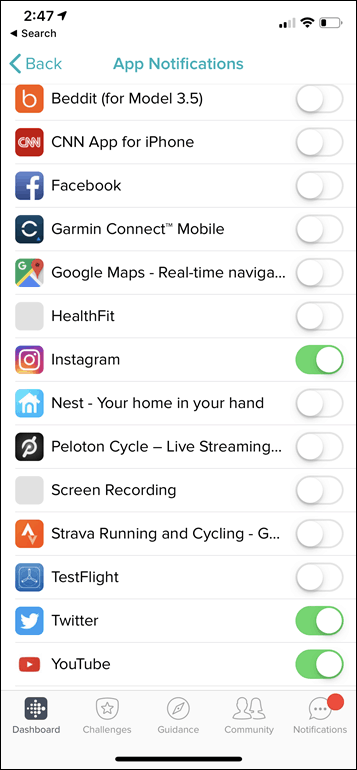
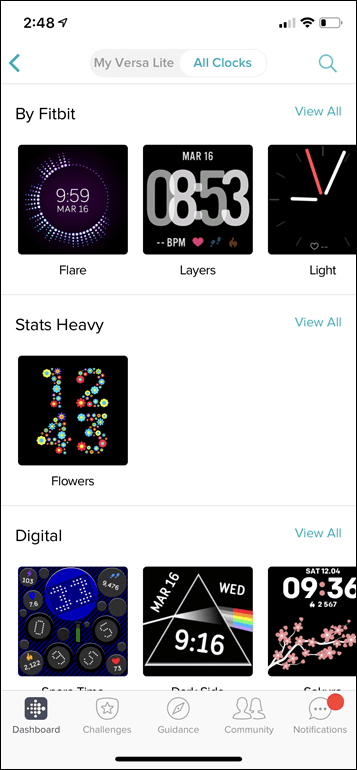

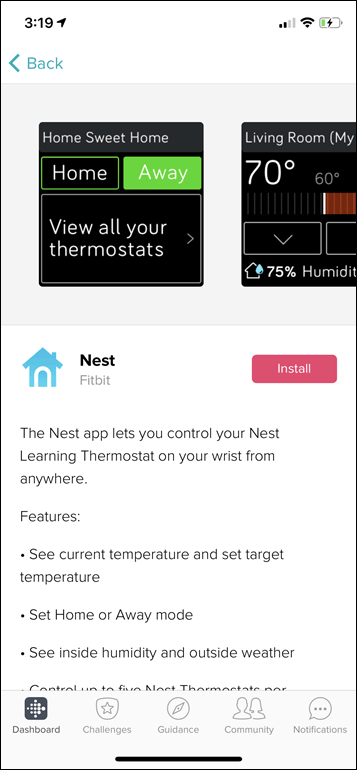
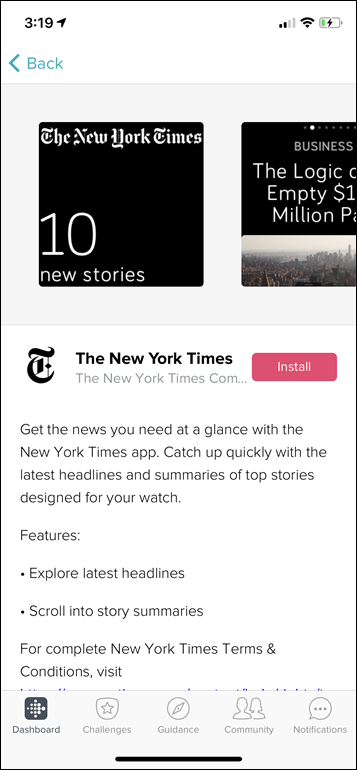


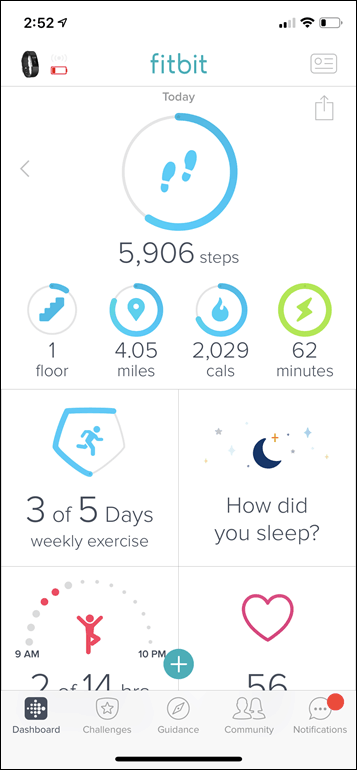
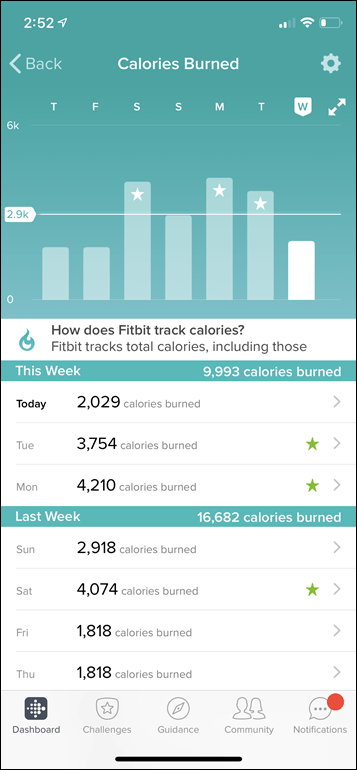

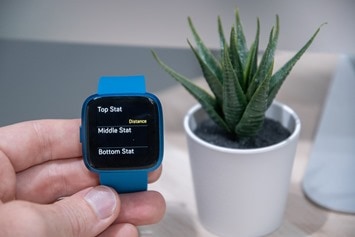
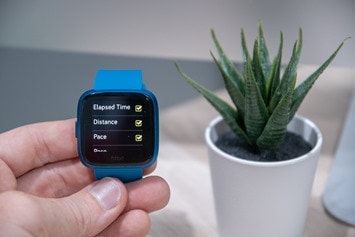
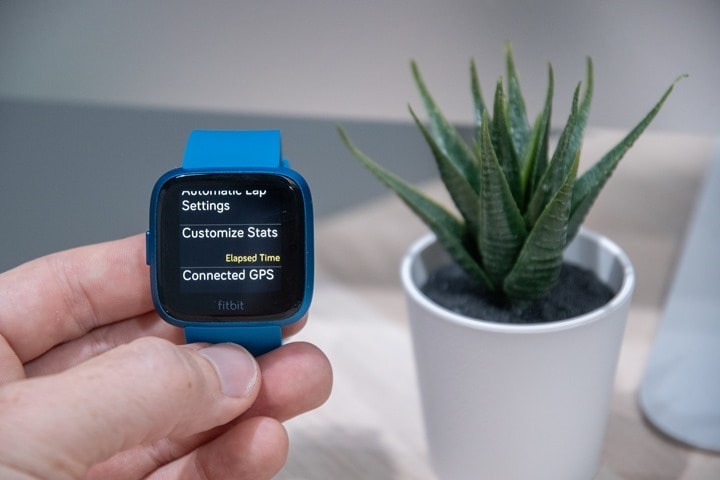

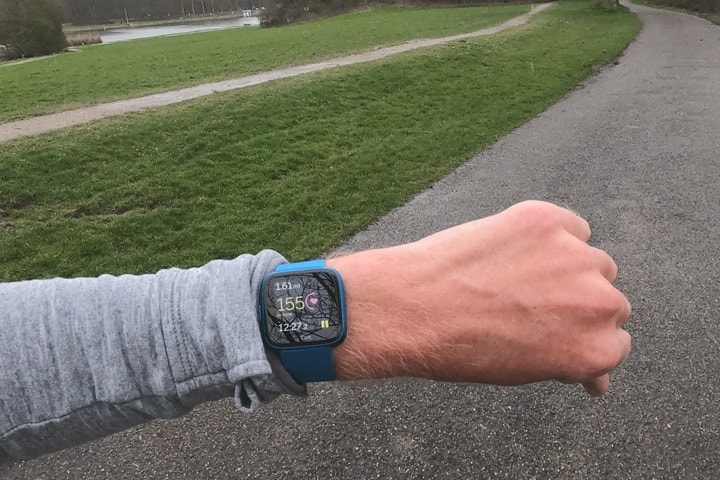
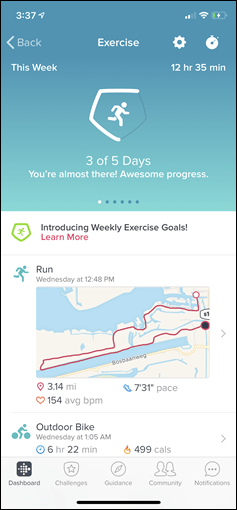
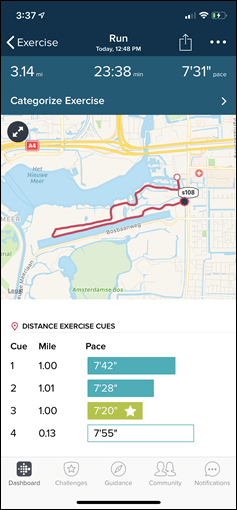
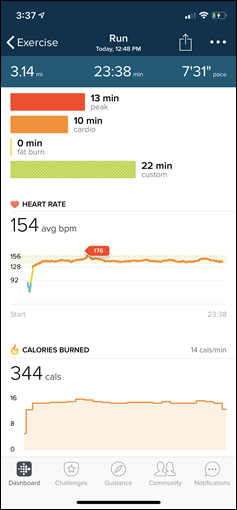



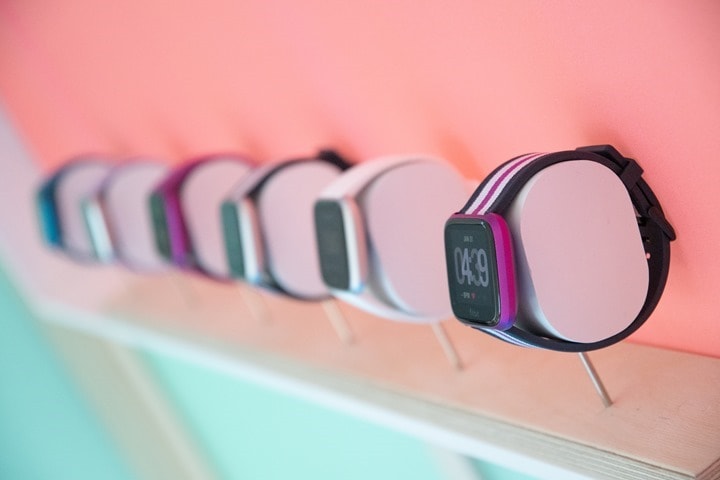






















Note that while there is an SPO2 sensor, it’s not currently used and there is no timeframe to enable it. Currently, there is a beta filled up almost immediately for their new sleep tracking metrics which does use the SPO2 sensor, but since they aren’t taking any new people into that program, you’re currently SOL if SPO2 is important to you.
Yeah, I agree there. I feel like Fitbit has been kinda puttering around this for a long time. Sorta riding the marketing around SPO2, but not delivering.
A clever way to move a few units, but not much more.
I’m struggling to envision the target market here. I suppose the non-athlete buyer that wants basic pedometer and sleep tracking, but considers the fitness tracker form factor so 2006, and has budget limitations.
Allllllrighty then!
I’d argue that moving units is pretty much what businesses in this space should be doing. ;)
The target market is actually simple: It’s people who were willing to spend in the $120-$149 range, that Fitbit thinks they can entice to spend a few bucks more and get a full fledged smartwatch with 3rd party apps.
It’s also them likely looking at the sales numbers for Versa when the price was on sale at various periods over the last year to the same $160ish price point, and seeing they sold a crapton of units.
I don’t think this is an athletic play per se – but a smartwatch play. And honestly, I think it might actually be brilliant. There’s no mainstream competition at that price point. They’re kinda pulling a card from Polar’s “just undercut the crap out of them on price” playbook.
My emphasis was on the word //few// !
Fair response. And in full agreement on discounting strength. Versa at US$150 flash sales moves a ton of units. So they’re doubling down and pushing prices even lower. Unsure how this plays out given company is still burning cash.
Frankly not sure what I’d do differently were I them. Beside get leaner in SF.
I think this watch is just the “next generation Pebble”.
Boring product from a boring company…who used to be rather good and innovative. They will either die or be bought by somebody, they can’t continue to go downhill like this.
I’ll bite.
What product from what company is more feature capable or exciting at this price point?
Might be a demographics thing, but most people around me that used to have a Jawbone moved to a Fitbit device, and are now either rocking a more expensive “smarter” and/or better-looking smartwatch from Apple, Samsung, Garmin or one of the Chinese giants, or a knock-off activity tracker from China that is much cheaper than Fitbit products. Like Polar, Fitbit seems to be standing still in the soft middle, just spinning endless refresh of the same “meh” products trying to fight on price and value, on what has become a technological and/or fashion statement product. Whatever Fitbit market share is, it will continue to go down with products like this.
Fitbit and Polar do completely opposite things here: Fitbit is trying to undercut Apple on the smartwatch side, while Polar is trying to undercut Garmin on the “serious” sports side.
They both do a decent job technically, but are not quite there because most people will always follow the mainstream option. If all your friends in the running club have a FR you are less likely to go for a Polar just to save 50 bucks.
None of them is boring, if anything I find it boring to always go for the option of the majority.
(Disclaimer: on my second Polar M watch, waiting for them to get their act together on phone notifications to decide if I get a Vantage)
If you’re looking for a full fledge smartwatch, maybe Ticwatch E2? I use the S2 as my daily wear watch, and did some running comparisons against my 645M and found that the S2 had better GPS reception, but much worse HR monitor accuracy. That said, the average casual runner gets a lot from the E2/S2, with all the usual Wear OS caveats.
I’d say it’s maybe in the same ballpark in terms of features (trade a few here and there as to which watch is “better”), and for the less fashion conscious, it might be more exciting? Though I like the styling just fine for mine (care more about the screen and rich notifications), the Versa is definitely better looking.
There is some interesting stuff from small Chinese companies as well, but nothing mainstream. I would say the bigger issue is margins.
I think they’re targeting the market that was buying the Versa on sale previously with a watch that’s cheaper to make, and so they’ll make more. Fitbit needs badly to shore up the bottom line.
“If all your friends in the running club have a FR you are less likely to go for a Polar just to save 50 bucks.” Unlike what the Internet would let you to believe, most people in fact live a boring lifestyle, and don’t have that many friends to begin. So I don’t buy the “rally behind a platform or a brand” argument. A lot with follow trends, some with try to keep up with the Joneses. I would say that for most, wearing such a product is akin to wearing a piece of jewelry and/or making a fashion statement. Regardless if it’s a good value or not, this latest Fitbit is boring, has no killer feature that nobody else has, and looks like all the much cheaper Chinese knock-offs. Nothing to get excited about, and why IMO Fitbit is following the same path as Jawbone – i.e. into oblivion.
Been watching this space.
I think these lower priced units are really missing the mark with what people want and that includes the kids space.
Many people want a basic activity tracker, but with more smartphone features such as ability to see notifications and make simple responses.
But what most of these are missing is music and without that they will go nowhere.
You need to have a “Spotify app” such as Samsung to allow direct control of the phone/ipad, some storage with the ability to download an offline playlist for travel, exercise, and potentially the ability to use spotify directly on the device through spotify connect, and definitely bluetooth to headphones.
If Samsung can make the Active for $199, surely someone can make a lower priced unit minus some features for $120-150.
For kids these activity trackers are useless. Many kids have smartphones,say what you will, but they want to respond to texts messages from friends, family and stream music and wear them full time, therefore waterproof.
Until the above is achieved most will stay away, especially paying in excess of $200 and way up for the above features which only a few products have and for something that will become obsolete, but usable for only a few years before it gets replaced.
I think we’ll see the cost of offline music getting cheaper and cheaper. One has to remember that it really was Spotify holding back the industry here, not the wearable companies. They’re the ones that pushed back so strongly on offline music. And since Spotify pushed back, the other streaming platforms were hesitant.
I think we’ll see a pretty big breakthrough in streaming providers happen across platforms for 2019. It’s gonna be war, and I think we’re gonna see some pretty strange bedfellows come of it (all great for consumers).
I wouldn’t overthink though the reality that Samsung may be producing the Active at a loss here (or break-even). That’s sorta their thing in the past, knowing they can hook people into the ecosystem and upsell a phone. Still, I’m super excited to see if the Active can finally nail it.
As for kids – the goal here isn’t notifications, it’s obesity.
With that said, I’m not convinced Fitbit gets it yet. Kids want to make it fun and entertaining, and Garmin’s Vivofit Jr system with Disney/etc tie-ins is really really really good with that. I’m seeing more and more of them on kids as I travel, and when I chat with folks that have them – everyone is super pleased with them and the larger gamification system that exists between the child and parent beyond just activity, but also things like chores.
Fitbit frankly lacks all of that. And looking at the bands in person this week, they’re gigantic compared to the Garmin ones. It’s literally just an Inspire pod inside a kids band, that’s it.
I think offline music may be a strong selling / marketting feature, but I don’t think it is that usefull or inportant in a “low end” watch.
Why?
Many people want offline music on a watch when running (or doing similar outdor activities) because smartphones are bulky these days. But if you do such activites you won’t be happy with a watch that lacks GPS.
Other than that I cannot imagine many situations when a phone isn’t a much better music player. The phone has much more options for music services, a much bigger battery, a better user interface to manage content, a more reliable bluetooth connection and it isn’t limited to just offline playback.
Yes, I do think music controll is an important feature. But offline playback… not so much.
I suspect the main scenario for offline music but sans-phone is actually the gym.
Interesting device, will this also sync to Trainingpeaks? If yes, do the metrics also include sleep stats and resting heart rate?
Unfortunately, it seems that most if not all activity trackers only sync workout data.
Yup, TrainingPeaks sync is supported: link to help.trainingpeaks.com
I haven’t tried it in a few years, but should still work.
As for what exactly it connects, it has the following optios.
Allow All
location and GPS
weight
activity and exercise
heart rate
I just connected my account and will see what exactly comes over. If I forget, remember me in a day or two and we’ll see what shows up.
Ah yes, that’ll be great, thanks!
Any update DC?
Hi Ray, how does this compare to the Withings Steel HR (Sport)?
Also, Inspire HR vs Withings Pulse HR – which would you recommend?
Good question. I think with the Withings you’re basically paying for a more swanky experiance, but less data on the unit itself during the workout. Whereas the Fitbit you’re getting more data displayed to you mid-workout, but not as much swank.
I’ll be able to dig into that exact question more soon though, I’ve got the Withings Pulse HR floating around waiting on deck.
Can you quick reply w the lite version? Also can you look at pictures through the photos app or if it is sent as an iMessage?
With TTMM for Fitbit Versa – awarded clock faces collection – Versa has huge advantage over Apple Watch.
I want to add a second fit bit versa lite edition to my fit bit app for my husband. I can’t download a second app for him, and when I try to add a device, it was to replace my device, rather than add another one. How can I add his device to the app?
My fitbit versa lite saw me data not cleared synchand try Again. So how do solve this problem now ? Please advice me.